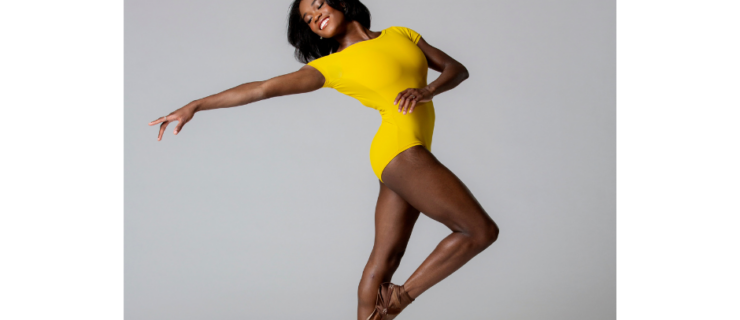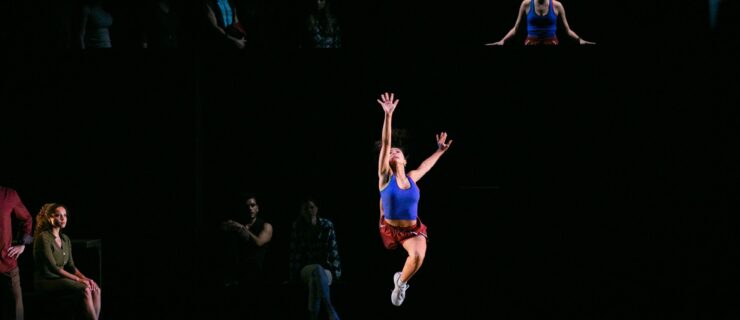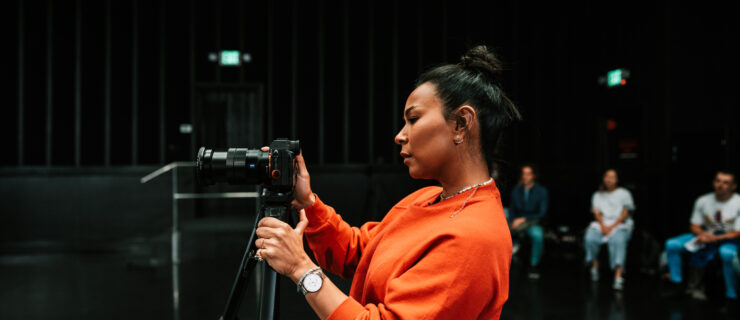How Getting a Job at Your Dance Studio Can Benefit Your Wallet—and Career Path
If you’re in high school, working after school/on the weekends/over the summer may be a reality you’re not keen to face. After all, you’ve got enough to worry about: homework, rehearsals, technique classes, and maybe even college applications. But a job doesn’t have to mean babysitting or folding sweaters at Madewell. Instead, you can develop the same communication, organizational, and leadership skills—not to mention earn a little green—by working at the very place you likely already spend the most time: your dance studio.
Teaching is probably the first studio job that comes to mind, but there are other roles that can be invaluable to your eventual career. “I grew up training hard as a dancer and studying visual arts, but I was also academic and analytical—I loved the rigorous side of school,” says dancer Anna Marchisello, a former student at CC & Co. Dance Complex in Raleigh, NC, who has assisted Stacey Tookey and Kirsten Russell and works as a production manager in NYC with Jonathan Berger.
Getting the Job
Interested in pursuing a job at the studio? Approach your studio director about your desire to work. Be up front about your interests and intents, as well as your schedule. She may have questions, like: What are you hoping to get out of the work? Why are you interested in a position? Be ready with a few prepared answers.
You might find out that your studio already has a formal work-study program. At CC & Co. Dance Complex, for instance, “there’s an assistant teaching program for students ages 12 and up and an internship program for four or five graduating seniors or those who have just graduated,” says owner Christy Curtis. At Westchester Dance Academy in Mt. Kisko, NY, there isn’t a formal work-study program, but Sallie Burke, co-owner and studio administrator, is almost always receptive to students’ requests. “Most often, the students who approach me about studio work are used to discipline and are easily trainable,” she says. “I love hiring students—they’re efficient, bright, and organized.”
Your conversations with the studio director or administrator should also include the not-so-easy-to-discuss topic of compensation. If, like at CC & Co., your studio has a program in place, the number of hours worked and starting wages might be set. “Assistant teachers receive tuition discounts per number of hours worked, while interns receive an hourly wage,” says Curtis. At Westchester Dance Academy, two or three students are often fulfilling their school’s work-study requirements, and thus only receive school credits they need to graduate. The numbers of hours students work depend on their school’s academic guidelines, but “we work out their schedule in the beginning,” says Burke, “and they follow through the whole semester.”

Anna Marchisello (far right) talks through an element of Jonathan Berger’s exhibition, “An Introduction to Nameless Love.” (Joseph Gresser, courtesy Marchisello)
The Work
In the studio office, you’ll likely assume administrative tasks: registering new dancers, drafting memos, uploading music to various competition websites, helping with costume measurements and shoe fittings, and posting to the school’s social media accounts. Westchester Academy students also use Jackrabbit—studio-specific software that many schools across the country employ to track registration, attendance, and tuition. “I only allow tuition to be handled by our full-time office staff member,” says Burke, “but our students definitely get familiar with the software, pulling attendance sheets and adding newcomers into the system. They also use Word, QuickBooks, Excel, and Google Docs.”
Make it Your Own
If you have particular interests outside of dance, brainstorm with your studio’s director about specific roles or odd jobs that can be tailored to you. One of Curtis’ former students, for instance, studies communications at Pace University, and has helped manage the social platforms for CC & Co.’s nonprofit, Move it Raleigh. Love writing? Consider contributing to your studio’s newsletter or drafting studio-parent communications. Interested in photography? Burke often asks her Westchester work-study kids to snap class pics to use on the studio’s social feeds or in brochures. Marchisello channeled her visual arts and design savvy to create logos for CC & Co.’s annual performances and studio apparel, and assisted with costuming guest artists’ pieces, taking their early visions and bringing them to fruition.
Most recently in her work as a production manager, for Berger, Marchisello coordinated a team of about 15 people who were making giant sculptural pieces—Marchisello often draws on her experiences assisting Curtis at CC & Co. “Everyone on the team has different strengths,” she says. “Christy taught me to take stock in everyone’s individual passions—what each is capable of and fulfilled by. Divvying up the work that way makes for a really efficient, supportive, and passion-driven environment.” Ultimately, Marchisello’s experience working for her studio was the foundation for the multifaceted arts career she enjoys today. “It first showed me that I could combine my creative and academic sides into one—I didn’t have to keep my interests separate,” she says.




